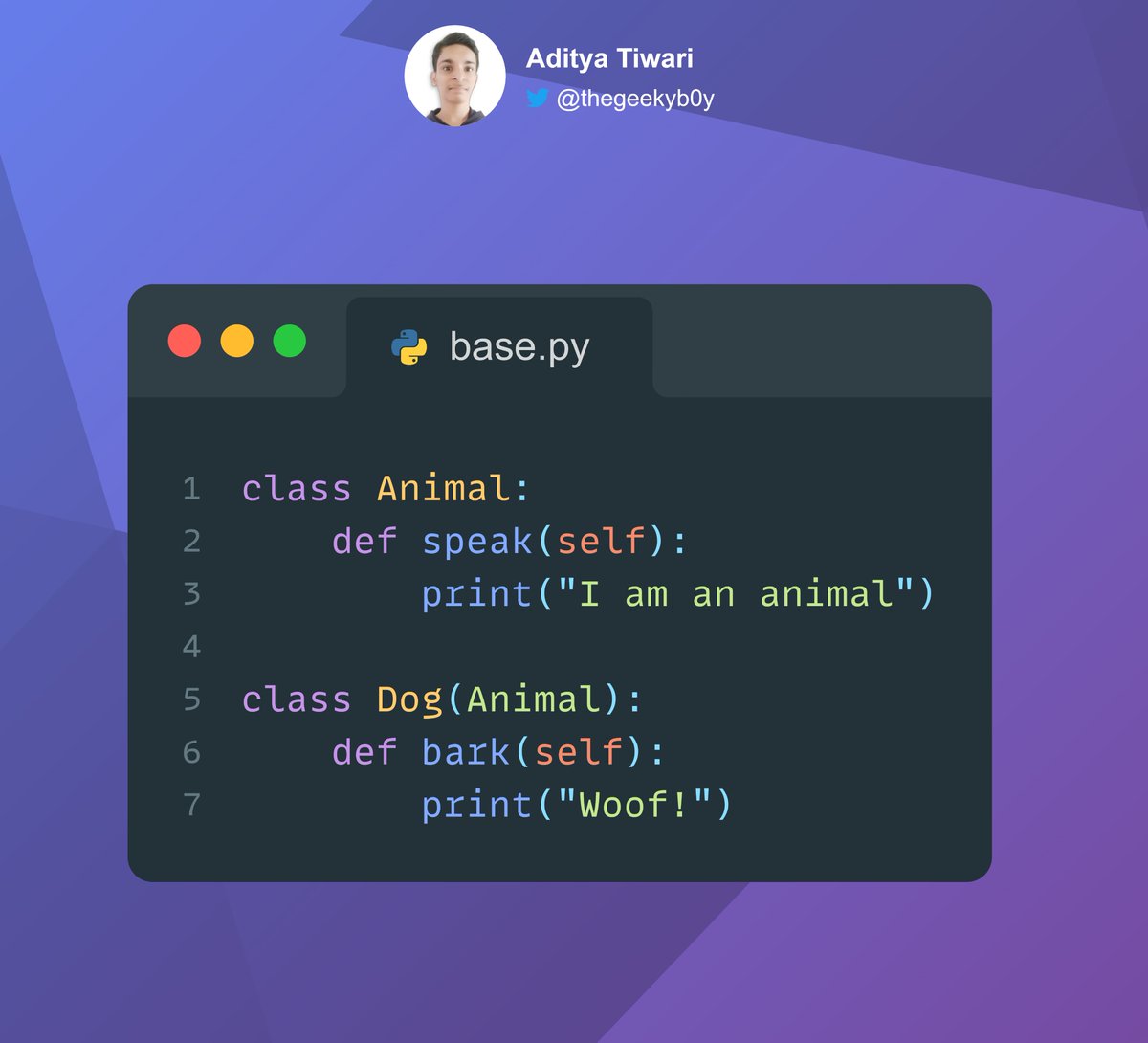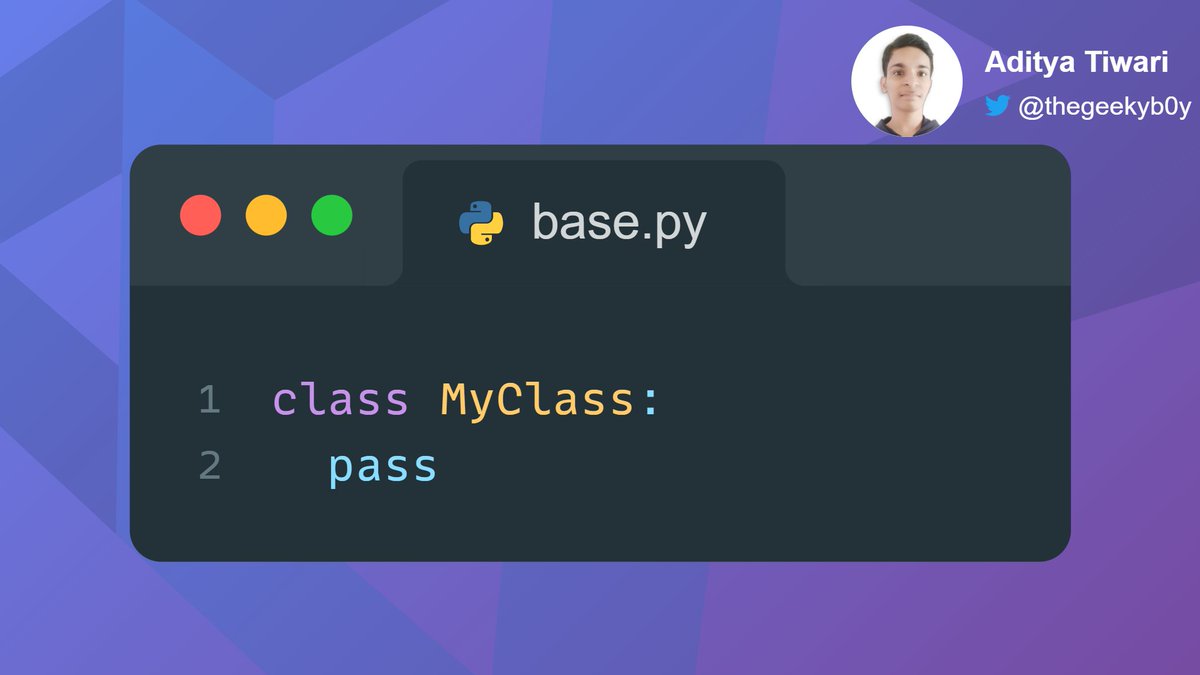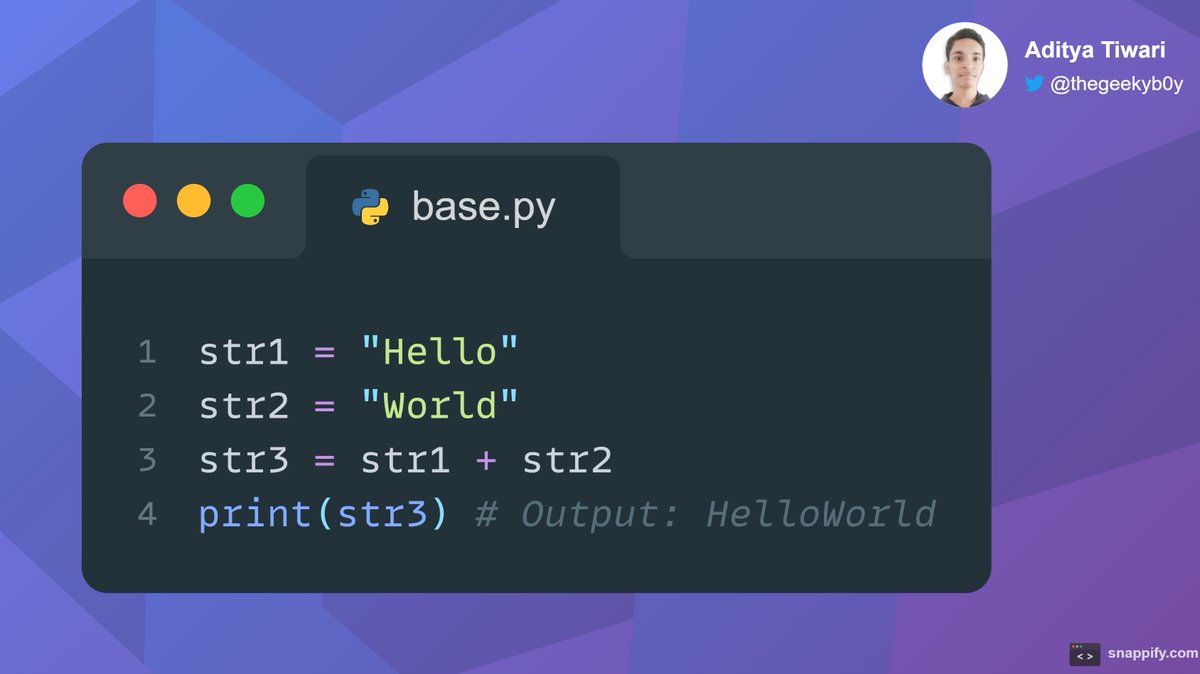F-strings in Python : The ultimate usage tips ⚡
F-strings in Python are a concise and powerful way to format strings. You can include any valid Python expression inside the curly braces in an f-string.
Thread 🧵
#Python #programming
F-strings in Python are a concise and powerful way to format strings. You can include any valid Python expression inside the curly braces in an f-string.
Thread 🧵
#Python #programming

To use an f-string, just prefix your string with the letter "f".
Here's an example that uses an f-string to format a variable:
#Python
1/16
Here's an example that uses an f-string to format a variable:
#Python
1/16

You can use f-strings to format numbers as well. Here's an example that formats a floating-point number with two decimal places:
2/16 #Python
2/16 #Python

You can also use f-strings to format dates and times. Here's an example that formats a datetime object:
3/16
3/16

F-strings can also include conditional expressions. Here's an example that uses a conditional expression to format a string:
4/16
4/16

F-strings also support string interpolation for objects that have a __str__ or __repr__ method. Here's an example that formats a custom object:
5/16
5/16

You can use f-strings to format dictionary values as well. Here's an example that formats a dictionary:
6/16
6/16

F-strings can also include expressions with function calls. Here's an example that uses the len() function:
7/16
7/16

F-strings can include expressions with ternary operators. Here's an example that uses a ternary operator to format a string based on a boolean value:
9/16
9/16

F-strings can include expressions with file I/O. Here's an example that reads a file and formats the contents using an f-string:
10/16
10/16

You can use f-strings to format values with custom formatting functions. Here's an example that formats a date using a custom formatting function:
11/16
11/16

You can use f-strings to format complex objects like dictionaries with nested keys. Here's an example that formats a nested dictionary:
12/16
12/16

You can use f-strings to format and align tabular data. Here's an example that formats tabular data using f-strings:
13/16
13/16

Using f-strings to write data to a file with a filename variable:
This example uses an f-string to display the number of bytes that were written to the file, as well as the filename itself.
14/16
This example uses an f-string to display the number of bytes that were written to the file, as well as the filename itself.
14/16

With f-strings, you can format strings quickly and easily with a minimum of fuss.
Give them a try and see how they can make your code more concise and readable!
15/16
Give them a try and see how they can make your code more concise and readable!
15/16
That's all for this thread. Hope you loved these quick code snippets on f-strings.
If you did, follow me for more snippets on python : @TheGeekyB0y
I post about #Python and #javascript .
If you did, follow me for more snippets on python : @TheGeekyB0y
I post about #Python and #javascript .
Get back to top of the thread :
https://twitter.com/TheGeekyB0y/status/1627561811397722113?s=20
• • •
Missing some Tweet in this thread? You can try to
force a refresh

















